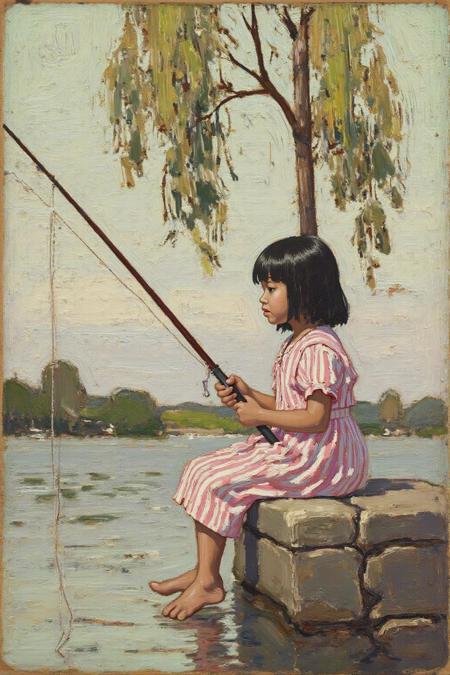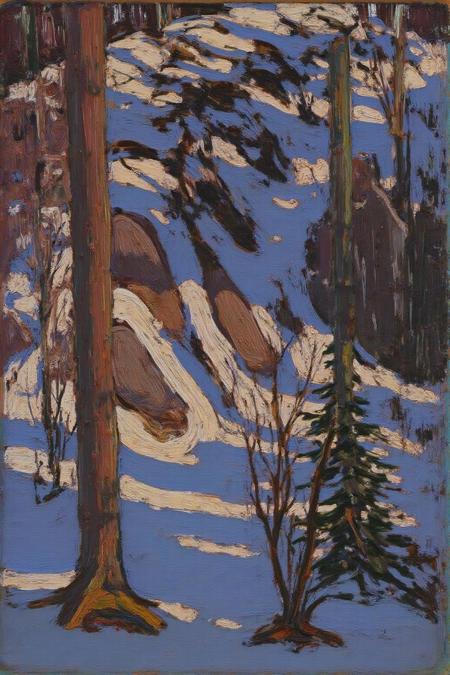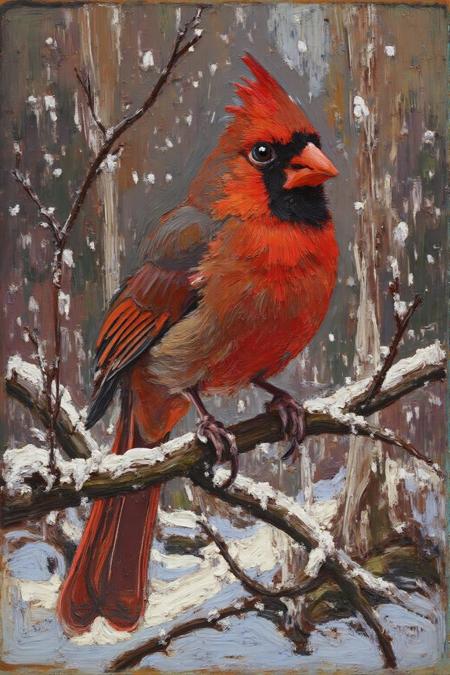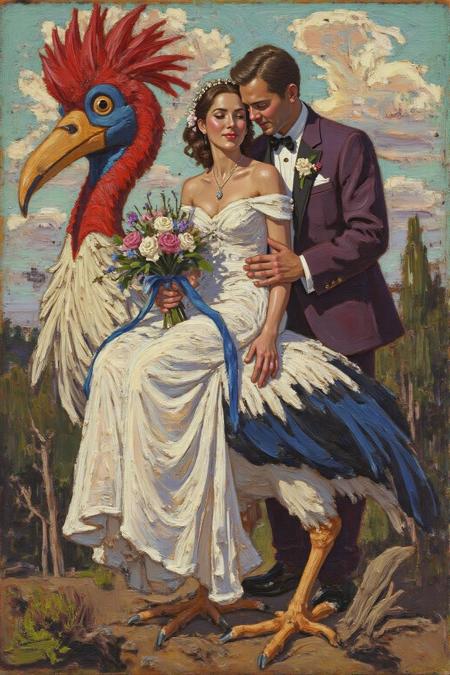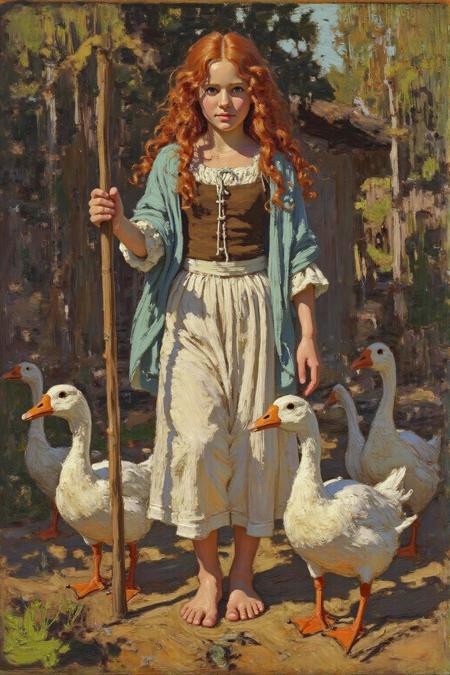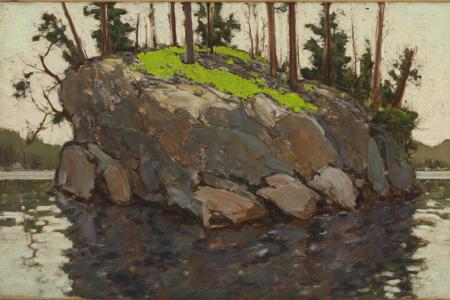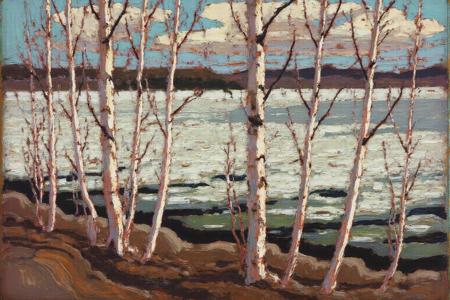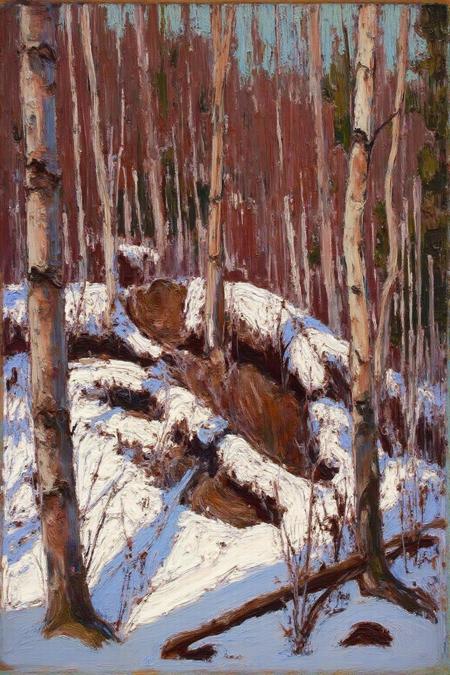
Trained on nineteen of the smaller landscape paintings of Algonquin park by Tom Thomson. For more of his work, please see https://ago.ca/collection/browse?keys=tom%20thomson
Landscape is not a genre I spend a lot of time looking at, but I do enjoy works by the Group of Seven, because I've been to Algonquin park a few times myself, so their works resonates with me. Thomson would have been a member had he not died so young, but his influence on the group is unmistakable.
Even though the LoRA is trained only on landscape, you can see Thomson's unique impasto style and colour palette on any painterly image generate with the LoRA. There is something magical about it ?. Use a weight of 1 for full effect.
Tom Thomson (1877–1917)
Tom Thomson was a Canadian painter whose work is closely associated with the Group of Seven, although he was never an official member. His vibrant and expressive landscapes captured the raw beauty of the Canadian wilderness, particularly the Algonquin Park region. Despite his untimely death at the age of 39, Thomson’s legacy has endured as one of the most influential figures in Canadian art.
Early Life
-
Birth and Childhood:
-
Born Thomas John Thomson on August 5, 1877, near Claremont, Ontario, Canada.
-
Raised in Leith, a small rural community in Ontario, as one of ten siblings in a farming family.
-
-
Education and Early Career:
-
Thomson showed an early interest in art but had no formal training until later in life.
-
He worked various jobs, including as an engraver and commercial artist, which honed his skills in design and composition.
-
-
Move to Toronto:
-
In 1905, Thomson moved to Toronto, where he worked at commercial art firms, including Grip Ltd., alongside future members of the Group of Seven.
-
Artistic Career
-
Discovery of the Canadian Wilderness:
-
Around 1912, Thomson began visiting Algonquin Park, a vast wilderness area in Ontario, which became his primary source of inspiration.
-
His frequent trips into the wild helped him develop a deep connection to the Canadian landscape.
-
-
Painting Style:
-
Thomson’s style combined elements of Impressionism and Post-Impressionism, marked by bold, expressive brushwork and vibrant colour.
-
He used oil sketches on small wooden panels to capture the essence of the landscape, later turning some of these into larger studio paintings.
-
-
Key Themes:
-
His works often depicted lakes, forests, and changing seasons, capturing the spirit of the rugged Canadian outdoors.
-
He focused on mood and atmosphere, often using exaggerated colours and dynamic compositions.
-
-
Influence on the Group of Seven:
-
Thomson’s work and dedication to depicting the Canadian wilderness deeply influenced the Group of Seven, a collective of painters who sought to establish a distinctly Canadian style of art.
-
Notable Works
-
The West Wind (1917):
-
One of Thomson’s most iconic works, symbolizing the power and beauty of nature.
-
Features a solitary pine tree against a dramatic backdrop of sky and water.
-
-
Northern River (1914–1915):
-
A vibrant and atmospheric depiction of a river surrounded by autumn foliage.
-
-
Jack Pine (1916–1917):
-
Another masterpiece, showcasing a lone pine tree, emblematic of the rugged beauty of Canada’s wilderness.
-
Personal Life
-
Thomson was a reserved and introspective person who preferred the solitude of the wilderness.
-
He was known for his love of fishing, canoeing, and exploring remote areas.
Mysterious Death
-
Circumstances:
-
On July 8, 1917, Thomson’s body was found in Canoe Lake in Algonquin Park, shortly after he went missing during a solo canoe trip.
-
The official cause of death was drowning, but the circumstances remain unclear, leading to speculation about foul play, suicide, or an accident.
-
-
Legacy of His Death:
-
Thomson’s death added a layer of mystique to his life and work, fuelling his status as a legendary figure in Canadian art.
-
Legacy
-
Artistic Influence:
-
Thomson is often seen as a precursor to the Group of Seven, whose members continued his mission to celebrate Canada’s natural beauty through art.
-
His paintings, especially his sketches, are celebrated for their energy, spontaneity, and ability to capture the spirit of the wilderness.
-
-
Cultural Icon:
-
Thomson has become a symbol of the rugged, independent artist connected to the natural world.
-
His works are considered national treasures in Canada and are held in major collections, including the National Gallery of Canada.
-
-
Exhibitions and Memorials:
-
The Tom Thomson Art Gallery in Owen Sound, Ontario, is dedicated to his life and work.
-
In Algonquin Park, a cairn and totem pole memorialize him near Canoe Lake.
-
Conclusion
Tom Thomson’s brief but impactful career left a lasting mark on Canadian art. His dedication to capturing the untamed beauty of the Canadian wilderness helped define a national artistic identity. His works continue to inspire admiration for their boldness, vitality, and reverence for nature.
描述:
This is epoch 10, the other epochs can be found at tensor. art/models/815394683808370870/Tom-Thomson-CapD6A3Cos6-2025-01-05-21:58:56-Ep-10
FLUX.1 - dev-fp8
Trigger: tomthom1 painting
Repeat: 20 Epoch: 10
Unet LR: 0.0006 Scheduler: cosine Optimizer: AdamW
Network Dim: 6 Alpha: 3
Epoch Loss
1 0.377
2 0.379<-
3 0.366
4 0.380<-
5 0.366
6 0.338
7 0.338
8 0.310
9 0.304
10 0.287 <- lowest
训练词语: tomthom1 painting
名称: tomthom1_cap_d6a3.safetensors
大小 (KB): 56207
类型: Model
Pickle 扫描结果: Success
Pickle 扫描信息: No Pickle imports
病毒扫描结果: Success

